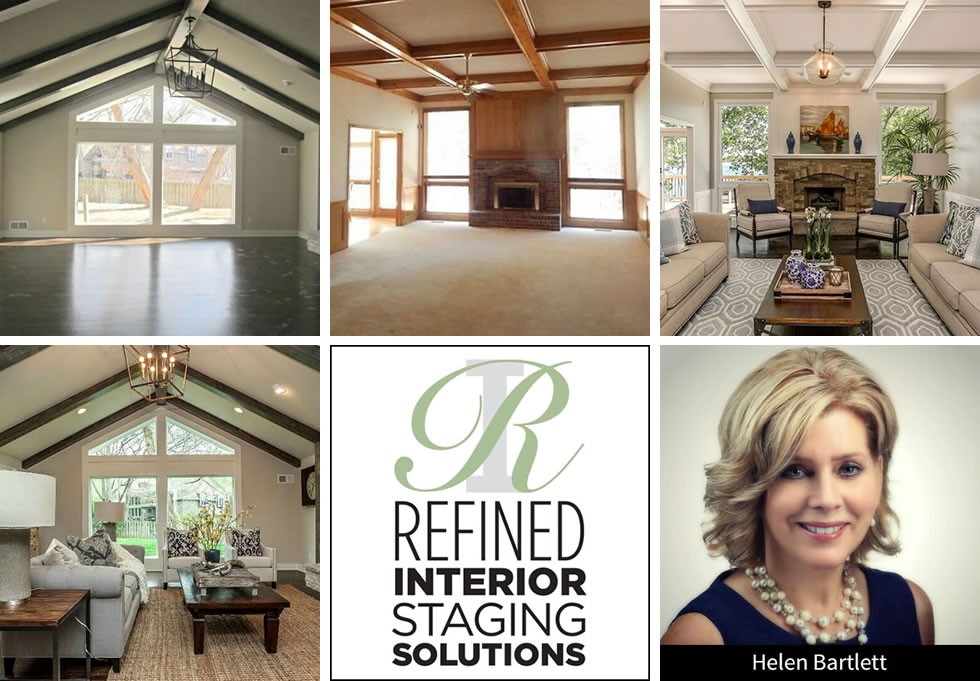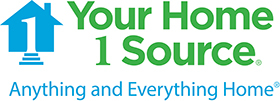
When real estate inventory is low and prices are at a premium, many homeowners think their homes will sell quickly and at full listing price. Possibly, but it’s not ordinarily that easy. Even in a robust real-estate market, homes with over-crammed spaces or empty rooms may linger on the market or sell below list price.
Enter Staging. It’s an option that’s become more mainstream in recent years by homeowners in all price points – not only by those with luxurious, high-priced homes. Staging was first used by Realtor® Barb Schwartz who came up with the concept in the 1970s. It was then picked by creators of HGTV and DIY TV shows who saw staging as a way to help homeowners tweak their houses for better resale. And for many homeowners it became a lesson in how to better appeal to buyers, since many weren’t objective about household items they should keep versus put away. Many also didn’t have the time, interest, or knowledge to stage their homes and apartments to put them in the best viewing light before they went on the market. “You’ve got maybe 15 seconds to impress a buyer–and then they move on to the next listing,” says stager Helen Bartlett, whose firm Refined Interiors Staging Solutions is based in Fairway, KS. Bartlett, a member of the Real Estate Staging Association, has thrived in the industry because of her background in both real estate and interior design. She’s also co-author of an important book on the topic, Home Staging: The Power that Sells Real Estate: 15 Home Staging Experts Share Industry Secrets (OTB Publishing, 2016). Following are her 10 tips to stage and sell a home fast and for the highest possible price:
1. Staging starts online. Almost 90 percent of buyers start their house hunt online so if rooms aren’t staged and photographed well, they won’t catch the eye of potential buyers, who will click onto another listing pronto.
2. Staging really works: Homes that are staged sell 50 to 80 percent faster than non-staged homes and also sell at 7 to 10 percent higher than a nonstaged home – and may exceed the asking price, according to industry data. People make an emotional connection when a house is well staged; they’re more apt to see themselves living in it.
3. Staging is NOT decorating. Staging is a way to make a home appeal to a broad demographic rather than featuring the tastes or interests of one homeowner apparent through so many personal possessions. There is a common denominator: clean, decluttered spaces without personalization, so the next buyers can imagine themselves living in the home.
4. Cater to the likely audience. The first key step is to learn what’s happening in the neighborhood – perhaps Baby Boomers are moving out and Millennials are moving in. You want to know this since their decorating tastes differ. You should observe what’s going on in the neighborhood, the average age of owners, what new owners are seeking, ask about school enrollment (increasing or decreasing), talk to shopkeepers for lifestyle preferences of the cohort, etc.
5. What each cohort wants. Millennials are more averse to clutter but into technology and casual entertaining with their friends. Maybe staging should include a big comfortable sofa or sectional with an ottoman for socializing, or a small deck area for relaxing that includes new outdoor furniture trends. But most important is the focus on clean, modern designs without a lot of color – mostly neutrals.
On the other hand, Boomers are more into nostalgia, warmth, comfort and quality. There might be one piece of furniture in a staged room that reflects it’s been with them forever. They also like architectural features, so play up the fireplace if the home includes one, or feature a quality piece of art. Neutral colors also work for them but a few pops of richer colors such as the trendy emerald greens and navies can also be introduced in accessories or art. And textures can be brought in and layered – maybe, a patterned carpet atop a sisal rug. And both groups favor updated kitchens and bathrooms but home sellers aren’t going to redo such spaces before selling; the spaces instead can be freshened – new towels, fresh paint, maybe new hardware.
6. Avoid sterile and cold. While the goal is to avoid personalization – rows of family photos and collections, you don’t want an empty cold group of rooms, either. Staging should include some textures from rugs, pillows, fabrics, and plants; some color, and some artwork. Just not too much. You don’t want the rooms to feel like they were cloned from a furniture store or hotel room without any personality but are designed to show that people can happily live there.
7. Avoid contrived. You also don’t want to follow some of the clichéd ways to show the house such as cookies baking in the oven, potpourri producing delightful smells in the bathroom, or a table set with place settings. Instead, introduce some accessories, simple window treatments, a few plants, and the latest palette of pale gray in a room or two with paint.
8. Avoid long-standing rules. Don’t just follow old guidelines such as only leaving three things on a counter and emptying closets so they’re only half full. A lot depends on the specific space and audience. Staging is more of an art than science and requires a skilled art and gut instinct as well.
9. Stage certain rooms more than others. An entire home doesn’t have to be staged, but rooms that are seen upon entry in those first 15 seconds should be transformed – a hall, living, dining, and kitchen areas. Other key areas are the master bedroom, master bath and outdoor spaces, since outdoor living is hugely important these days. Also, if the home includes any awkward spaces – perhaps a large upstairs hallway or small room with lots of windows – those are good places to stage so they don’t become negatives in the buyers’ eyes. Maybe you can transform the area so they’ll imagine a small home office or fitness room.
10. Bear in mind the costs. How much staging costs depends on the area of the country, affluence of the neighborhood, and size of the home. Generally, a Midwestern home that Bartlett might transform might cost 1/2 to 1 percent of the list price, a small cost when competition may be very keen.
